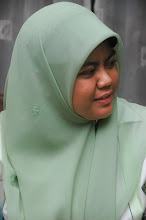How Are Schools Using Technology in Teaching and Learning Mathematics and Science
PS2206 (ICT IN SCIENCE AND MATHEMATICS) How are schools using technology in teaching and learning mathematics and science? Last week, I went to my former school, Sekolah Rendah Pengiran Anak Puteri Besar, Brunei 1 to observe on the usage of technology by the science and maths teacher in their lesson and how they used it in their teaching. The technologies that were provided in the schools are : • 20 computers for the pupils, • 5 macbook for teachers, • 1 interactive whiteboard (IWB) • 1 LCD projector • Wireless internet connection There is only 1 Computer lab in the school. 2 periods (1 hour ) slot in a week were given for each class to use the ICT rooms. It is mainly used for maths, science and English lessons. However, when the computer lab is not in used, other subject teachers are welcome to used them. The subject teacher and also with the help of the ICT teacher will teach the pupils using the computer and also IWB. Teacher will show pictures, slideshows and sometimes do interactive activity using the IWB. Teacher also can surf activities from websites. Whereas for the activity, the pupils will be doing on the pupil’s computer either in pairs or individual. In classes, some of the maths and science teachers use macbook provided or their personal laptops in their teaching. Even some teacher brought the LCD projector to the classroom. With the wireless internet connection that can be found anywhere in the school make easier for the teacher to get connected to the internet and show online activities. However, not all teachers prefer to use technologies in their teaching. This is due to : • time constraint in doing the preparation. • not skillful in using the technologies.



